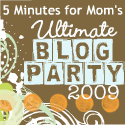For those of you who are not aware - I have epilepsy and March is epilepsy Awareness Month in Canada. Purple is the color; and lavender, the flower of epilepsy. The lavender color symbolizes the feelings of isolation and seclusion that person living with epilepsy and seizure disorders often experience. There is so much on this topic and I want to also write a bit about my life with epilepsy. So, I'm going to do this in two parts - part 1 will be general info and part 2 (seperate post) will be my experience.
General Facts:
- epilepsy is a neurological disorder - physical condition- which causes sudden bursts of hyperactivity in the brain.
- This hyperactivity produces "seizures" which vary from one person to another in frequency and form.
- epilepsy is not a disease or mental illness
- epilespy is not contagious
- a seizure may appear as a brief stare, a change of awareness, or a convulsion.
- In approximately 60-75% of cases, the cause is unknown
- There is no known cure yet. Although treatments are available to reduce the frequncy and severity of seizures.
- Epilepsy can develop at an age. However about 50% of new cases of epilepsy begin in childhood and adolescence, with the highest incidences during the first few months of life.
- It affects all ages, races, and ethnic backgrounds.
- Approximately 0.6% of the Canadian population have epilepsy.
- Each day in Canada, approx 42 people learn they have epilepsy.
Common Myths & Misconceptions:
Epilepsy comes from a Greek word meaning 'possesion'. The Greeks believed seizures were caused by demons, and regarded them as a supernatural phenomenon. The true nature of epilepsy has long been distorted by myth and fear, and people continue to hold mistaken notions about the disorder.
Twelve Common Myths & Misconceptions about Epilepsy:
Myth #1 :You can swallow your tongue during a seizure.
Truth: It's physically impossible to swallow your tongue.
Myth #2: You should force something into the mouth of someone having a seizure.
Truth: Absolutely not! That's a good way to chip teeth, puncture gums, or even break someone's jaw. The correct first aid is simple. Just gently roll the person on one side and put something soft under his head to protect him from getting injured.
Myth #3: You should restrain someone having a seizure.
Truth: Never use restraint! The seizure will run its course and you can not stop it.
Myth #4: Epilepsy is contagious.
Truth: About as contagious as a gunshot wound! You simply can't catch epilepsy from another person.
Myth #5: Only kids get epilepsy.
Truth: Epilepsy happens to people over age 65 almost as often as it does to children aged ten and under. Seizures in the elderly are often the after effect of other health problems like stroke and heart disease.
Myth #6: People with epilepsy are disabled and can't work.
Truth: People with the condition have the same range of abilities and intelligence as the rest of us. Some have severe seizures and cannot work; others are successful and productive in challenging careers.
Myth #7# People with epilepsy shouldn't be in jobs of responsibility and stress.
Truth: People with seizure disorders are found in all walks of life and at all levels in business, government, the arts and the professions. We aren't always aware of them because many people, even today, do not talk about having epilepsy for fear of what others might think.
Myth #8: With today's medication, epilepsy is largely a solved problem.
Truth: Epilepsy is a chronic medical problem that for many people can be successfully treated. Unfortunately, treatment doesn't work for everyone and there's a critical need for more research.
Myth #9: Epilepsy is rare and there aren't many people who have it.
Truth: There are more than twice as many people with epilepsy in Canada as the number of people with cerebral palsy (55,000), muscular dystrophy (28,000), multiple sclerosis (39,000), and cystic fibrosis (3,400) combined. Epilepsy can occur as a single condition, or may accompany other conditions affecting the brain, such as cerebral palsy, mental retardation, autism, Alzheimer's, and traumatic brain injury.
Myth #10: You can't die from epilepsy.
Truth: Epilepsy still can be a very serious condition and individuals do die of it. Experts estimate that prolonged seizures (status epilepticus) are the cause of many deaths in Canada each year.
Myth #11: You can't tell what a person might do during a seizure.
Truth: Seizures commonly take a characteristic form and the individual will do much the same thing during each episode. His behaviour may be inappropriate for the time and place, but it is unlikely to cause harm to anyone.
Myth #12: People with epilepsy are physically limited in what they can do.
Truth: In most cases, epilepsy isn't a barrier to physical achievement, although some individuals are more severely affected and may be limited in what they can do.
Seizure First Aid:
- for Tonic Clonic Seizures (convulsive seizures):
- If necessary, ease the person to the floor.
- Loosen any tight neck wear.
- Protect the person's head and body from injury.
- Do not restrain the person.
- Do not insert anything between the teeth.
- Once relaxed, turn the person onto the side to
ensure an open air passage and decrease risk of
aspiration. - After the seizure, let the person sleep if needed.
- Suggest that she/he see a physician.
- If the person has a second seizure within a few
minutes, call a doctor or ambulance
- For Absence Seizures (non-convulsive) :
- No first aid is required.
- Reassure the person.
- For Simple Partial Seizures (non-convulsive):
- No first aid is required.
- Reassure the person.
- For Complex Partial Seizures (non-convulsive):
- Do not restrain the person.
- Protect the person from injury by moving sharp or hot objects away.
- If wandering occurs, stay with the person, gently guide them away from potential danger and talk quietly.
Types Of Seizures:
Tonic-Clonic Seizures
In a generalized tonic-clonic (grand mal) seizure, the person will usually emit a short cry and fall to the floor. Their muscles will stiffen (tonic phase) and then their extremities will jerk and twitch (clonic phase). Bladder control may be lost. Consciousness is regained slowly.After a seizure, the person may feel fatigue, confusion and disorientation. This may last from 5 minutes to several hours or even days. Rarely, this disorientation may last up to 2 weeks. The person may fall asleep, or gradually become less confused until full consciousness is regained.
Absence Seizures
In an absence seizure, epileptic activity occurs throughout the entire brain. It is a milder type of activity which causes unconsciousness without causing convulsions. After the seizure, there is no memory of it.An absence seizure begins abruptly and without warning, consists of a period of unconsciousness with a blank stare, and ends abruptly. There is no confusion after the seizure, and the person can usually resume full activity immediately. An absence seizure may be accompanied by chewing movements, rapid breathing, or rhythmic blinking. Absence seizures are short, usually lasting only 2-10 seconds. They are very mild, and may go unnoticed by parents and teachers. Because absence seizures may recur frequently during the day, a child who experiences them may have difficulty learning if they are not recognized and treated.
Simple Partial Seizures
Simple partial seizures result from epileptic activity which is localized in one part of the brain, usually the cortex or limbic system.Consciousness is not impaired: people experiencing a simple partial seizure can talk and answer questions. They will remember what went on during the seizure.Simple partial seizures take different forms in different people. They are further classified according to their symptoms:
Autonomic Seizures - These seizures are accompanied by autonomic symptoms or signs, such as abdominal discomfort or nausea which may rise into the throat (epigastric rising), stomach pain, the rumbling sounds of gas moving in the intestines (borborygmi), belching, flatulence and vomiting. This has sometimes been referred to as abdominal epilepsy. Other symptoms may include pallor, flushing, sweating, hair standing on end (piloerection), dilation of the pupils, alterations in heart rate and respiration, and urination. A few people may experience sexual arousal, penile erection, and orgasm.
Emotional and Other - Simple partial seizures which arise in or near the temporal lobes often take the form of an odd experience. One may see or hear things that are not there. One feels emotions, often fear, but sometimes sadness, anger, or joy. There may be a bad smell or a bad taste, a funny feeling in the pit of the stomach or a choking sensation. These seizures are sometimes called simple partial seizures of temporal lobe origin or temporal lobe auras.
Motor - Other simple partial seizures include (clonic, jerking) convulsive movements. Jerking typically begins in one area of the body -- the face, arm, leg, or trunk -- and may spread to other parts of the body. These seizures are sometimes called Jacksonian motor seizures; their spread is called a Jacksonian march. It cannot be stopped.
Sensory Seizures - Some simple partial seizures consist of a sensory experience. The person may see lights, hear a buzzing sound, or feel tingling or numbness in a part of the body. These seizures are sometimes called Jacksonian sensory seizures. Simple partial seizures usually last just a few seconds, although they may be longer. If there are no convulsions, they may not be obvious to the onlooker.In some children, simple partial seizures lead to complex partial seizures, or to tonic-clonic convulsions.
Complex Partial Seizures
A complex partial seizure occurs when epileptic activity spreads to both temporal lobes in the brain. A complex partial seizure often occurs after a simple partial seizure of temporal lobe origin. Complex partial seizures are experienced most by children. In some children, they lead to tonic-clonic seizures. A complex partial seizure does not involve convulsions, but consciousness is impaired. Someone experiencing one will no longer respond to questions after the seizure starts.A complex partial seizure often begins with a blank look or empty stare. They will appear unaware of their surroundings and may seem dazed. The seizure may progress to include chewing movements, uncoordinated activity, or sometimes performing meaningless bits of behaviour which appear random and clumsy. These automatisms may include actions such as picking at their clothes, trying to remove them, walking about aimlessly, picking up things, or mumbling. Someone experiencing a complex partial seizure may become frightened and try to run and struggle. Following the seizure, there will be no memory of it.A complex partial seizure usually lasts about 2 to 4 minutes. It may be followed by a state of confusion lasting longer. Once the pattern of seizures is established, it will usually be repeated with each subsequent seizure. Complex partial seizures sometimes resist anticonvulsant medication.
Living With Epilepsy:
- Most people with epilepsy look and act like the rest of us and have a normal lifestyle.
- You cannot drive if you have uncontrolled seizures.
- However, if you've been seizure-free for atleast 12 months and the anti-seizure medication doesn't cause drowsiness or poor coordination than one with epilepsy may get a driver's licence.
- One of the most challenging problems faced by people living with epilepsy is employment. Approximatley 50% of people with epilepsy experience difficulty finding and keeping a job.
- Research has shown that people who lead an active life experience fewer seizures.
- Epilepsy can affect the various stages of puberty to menopause differently for a woman with epilepsy. The hormone levels during menstration and pregnancy can lead to increased seizure activity, birth control meds may be impaired by anticonvulsant medications. Approx 50% of all woman with epilepsy have increased seizure activity during pregnancy. research has shown that seizure activity usually decreases and may even disappear during menopause. There much more information in this article about the various concerns of a woman with epilepsy and how it relates to the various stages of life.
Links For More Information:
http://www.epilepsy.ca/ - The Epilepsy Canada Website. An excellent source of general information, guides for children and teens with epilepsy, and so much more even crosswords for adult and pediatric epilepsy.
Actor Finds Inspiration Being The Father To His Hero - This is an intersesting article about an actor an the show "Heroes" who has a son with epilepsy and his experiences raising a child with epilepsy.


















2 comments:
I love you and I support Epilepsy Awareness Month!!! You amaze me, girly!
It is amazing that you are promoting awareness of epilepsy. Many people do not know enough about it (myself included).
Post a Comment